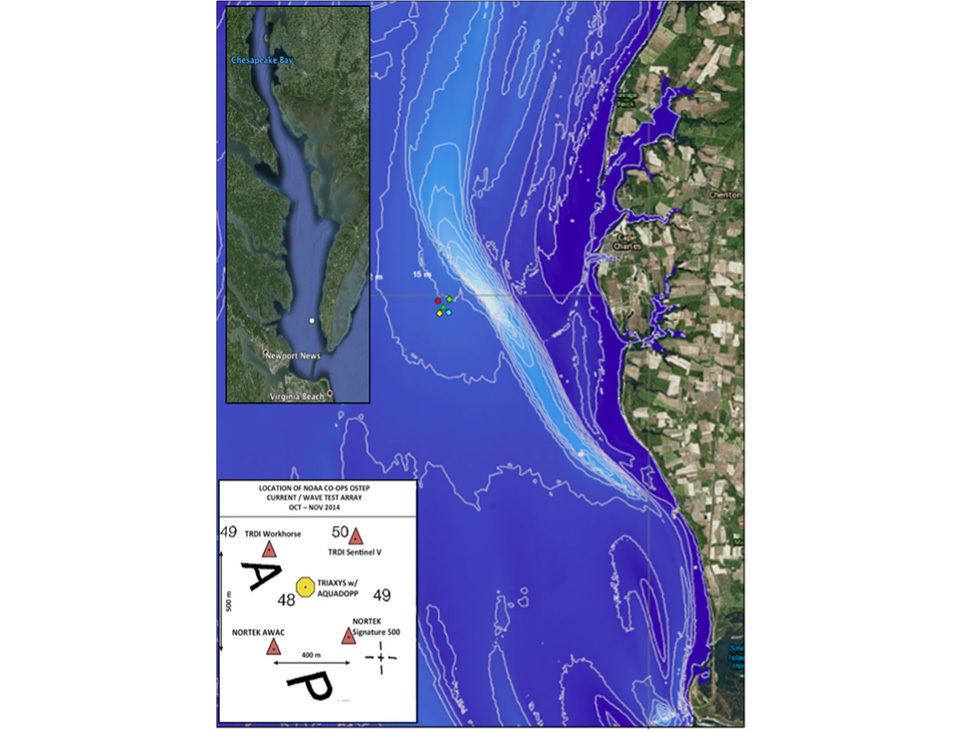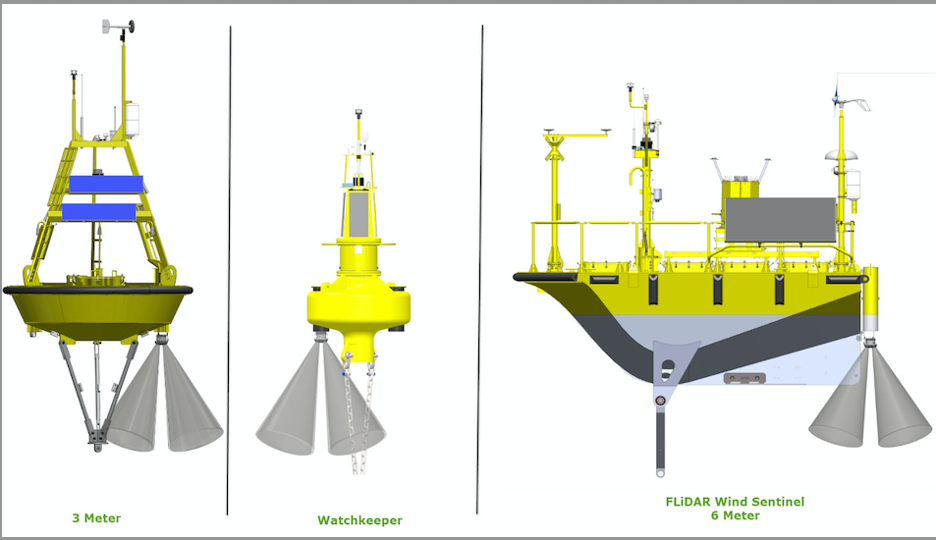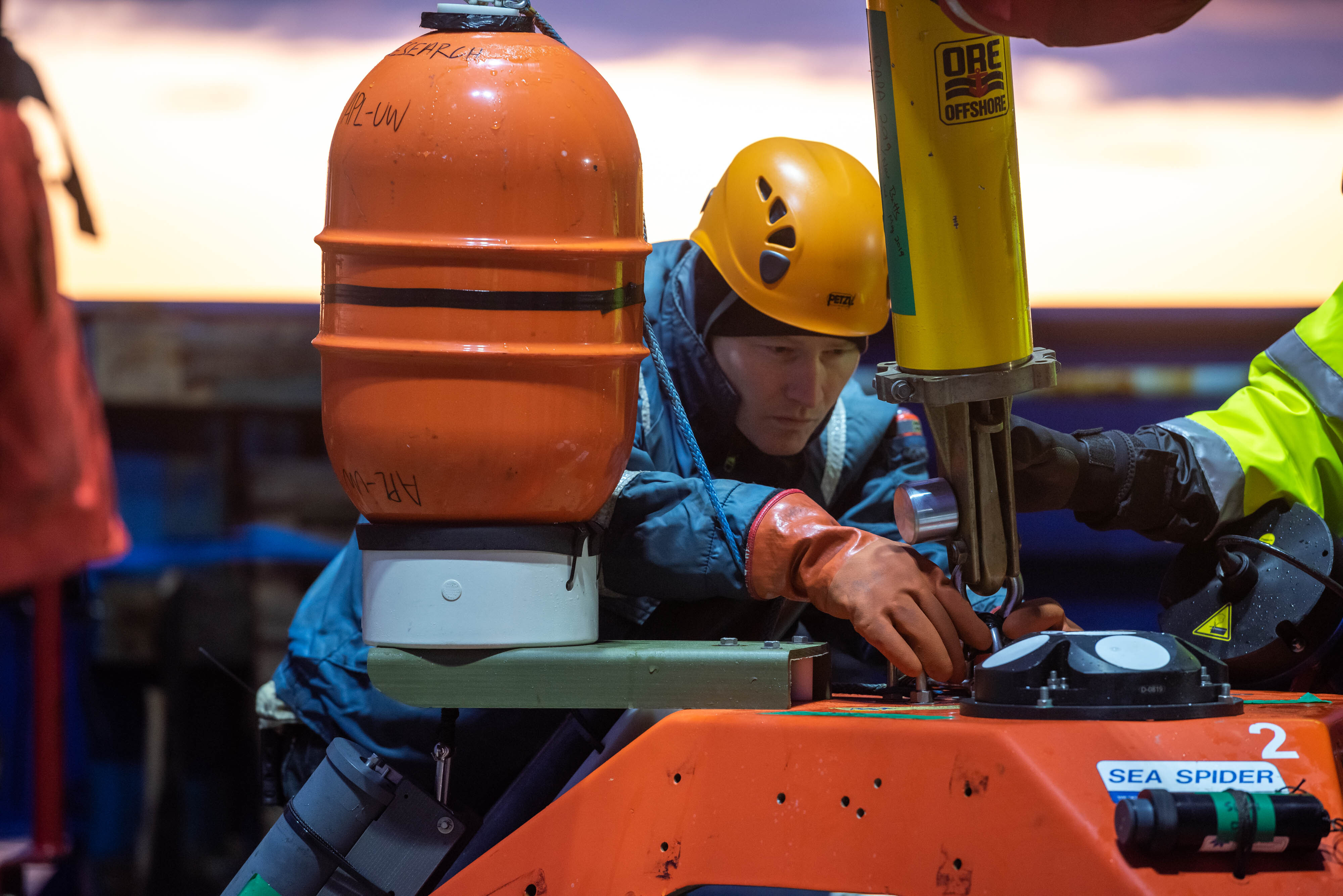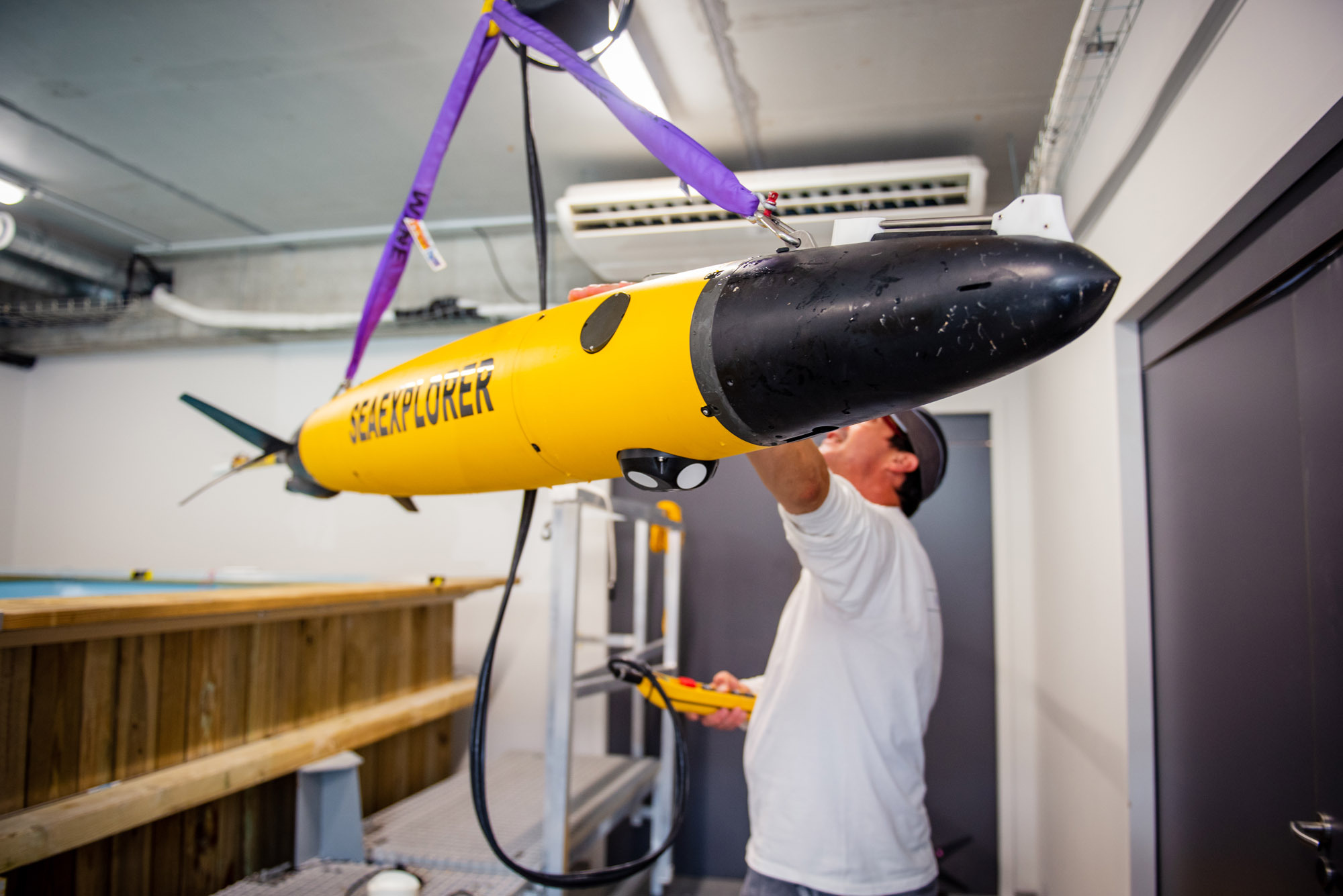
Improved metocean data accuracy with a buoy-mounted ADCP
- User stories
Synopsis
Challenge
Metocean wave buoys have been critical for marine operations for decades. Adding an ADCP to these buoys provides current profiles as part of the wave buoy dataset.
Solution
Technological advancements from AXYS and Nortek make it possible to mount a Signature ADCP with an integrated AHRS for distinct and accurate current measurement from a metocean wave buoy.
Benefit
From climate studies to offshore energy, many offshore operations benefit from the ability to collect real-time wave and current data from a single location.
A wave buoy is one of the primary data-collection tools for oceanographers. In the early 2000’s, the development of commercially available Acoustic Doppler Current Profilers (ADCPs) introduced the tantalizing prospect of adding the measurement of current profiles to the wave-buoy data set.
For some, the advantages of using a wave buoy with an ADCP – instead of an ADCP on the seabed – to collect current data was clear: they were easier to access, to power and maintain, and data could be collected in real time using radio telemetry systems. The collection of real-time wave and current data at a single location can be operationally advantageous in several applications, from climate studies to offshore energy.
“The most common applications would be in operations. The wave and current profiles are critical to determine, for example, a go/no-go situation in offshore construction or offshore operations,” says Alex Velasco, Sales Manager at AXYS Technologies, manufacturers of industry-leading TRIAXYS wave buoys.
Collecting current data from buoy-mounted ADCP while compensating for wave motion
There is a significant technical problem that must be overcome to collect accurate current data in this way: wave buoys are designed to respond without restraint to the waves. The motion means that the ADCP is installed on a very unstable platform, and this motion must be measured and compensated for accurately if the current profile is to be useful.
In 2004, AXYS partnered with Nortek on the development of a custom ADCP that would be integrated into the TRIAXYS wave buoy. The new TRIAXYS Wave and Current Buoy quickly gained market acceptance and began a steady sequence of evolutionary improvements.

Partnering with NOAA for data collection studies
By 2014, this process was stepped up when the National Oceanic and Atmospheric Administration (NOAA) joined Nortek, AXYS Technologies and Caribbean Wind LLC for a series of data collection studies that would support development of the buoy.
“It’s truly a good example of industry and academic collaboration to come up with a solution to the data issues that we experience,” says Alex Velasco. The four partners have subsequently conducted four field experiments in the southeast of Chesapeake Bay in the USA, and Nortek’s contribution was led by David Velasco.
Read the paper “The Next Generation of Buoys Integrated with Current Profilers” to learn how AXYS Technologies successfully integrated Nortek’s Signature Series ADCPs into a range of surface buoys.
A data collection study took place from December 2018 to March 2019. It used the latest buoy, which brings together the TRIAXYS Next Wave II buoy (with its TRIAXYS™ g3 sensor and AXYS WatchMan500™ technology) and Nortek’s Signature 500 Acoustic Doppler Current Profiler with integrated AHRS (attitude and heading reference system) to compensate the water flow measurements with data on the buoy’s motion.

New buoy design takes advantage of sophisticated capability of Signature ADCPs
AXYS Technologies also redesigned the TRIAXYS wave buoy to take full advantage of the powerful features of the Nortek Signature ADCP series. The new TRIAXYS moved the ADCP to a central location at the base of the sphere, protected it with a stainless-steel collar and offset the mooring attachment point to the edge of the collar to reduce mean tilt due to current drag, and also allow use of the ADCP’s center beam for advanced measurements such as scientific echosounding.
The buoy’s current profile measurements were validated against a nearby Nortek 600 kHz AWAC mounted on the seabed. The new buoy has “achieved current measurements, in difficult conditions, equivalent to those collected from fixed bottom-mounted profilers,” according to the initial results presented in a paper at the 2019 OCEANS conference (“Improving Current Measurements from Wave Buoys: Results from a Successful Five-Year Collaborative Development Project”).

Advantages of surface-buoy-mounted ADCP measurements
“Surface-buoy-mounted ADCP measurements provide distinct advantages when it comes to providing long-time-series current data and insights from the ocean. These advantages include the following: the data can be cost-effectively monitored, quality-controlled and delivered in real time; the ADCP instruments are accessible for at-sea service; and limitless long-term sustainable power can be easily supplied,” says Dan Shumuk of AXYS Technologies.
“These benefits all come with the additional technological challenge of providing quality data while the instrument is in motion with the ocean surface,” he says.
“The results from the collaborative development have shown that Nortek’s AHRS ADCP motion compensation implementation works effectively to mitigate motion when using the instruments in this otherwise very desirable configuration,” Shumuk says.
He adds that the contributions of Nortek employee David Velasco to this collaborative development and product integration were pivotal. “Through the various phases of the multi-year project he was either front-and-center leading the development or providing close support, review and feedback to ensure its ultimate success. David truly cares about the ability of Nortek’s products to deliver quality data and insights to the end user.”

Providing a higher level of accuracy in current profiling data from buoys
AXYS has been in the industry for more than 45 years now, and this experience was built on providing highly reliable, accurate products.
“We really appreciate that Nortek is able to complement what we offer by providing the same reliable, accurate products,” says Alex Velasco of AXYS.
“The AHRS feature of the Signature profiler provides a higher level of accuracy in the data that is being captured. And the TRIAXYS is the only platform that can do current profiling in the market right now."
AXYS has made available the Nortek Signature ADCP-integrated TRIAXYS and Metocean Buoys since 2019. Since then, they have supplied these systems to different organizations worldwide, including offshore renewable energy construction, ports and harbors, research and development and various government meteorological agencies.
AXYS have now integrated the AHRS-compensated versions of the Signature 1000, Signature 500 and Signature 250 ADCPs into multiple platforms within their fleet, including the TRIAXYS, WatchKeeper, 3 Meter and FLiDAR WindSentinel.
“What’s exciting is that there are other advanced features of the Signature series of profilers that are still to be explored,” adds Alex Velasco, “like the echosounder and the altimeter data that we can harness as well. It will really be a game changer to provide this additional data to our clients.”









